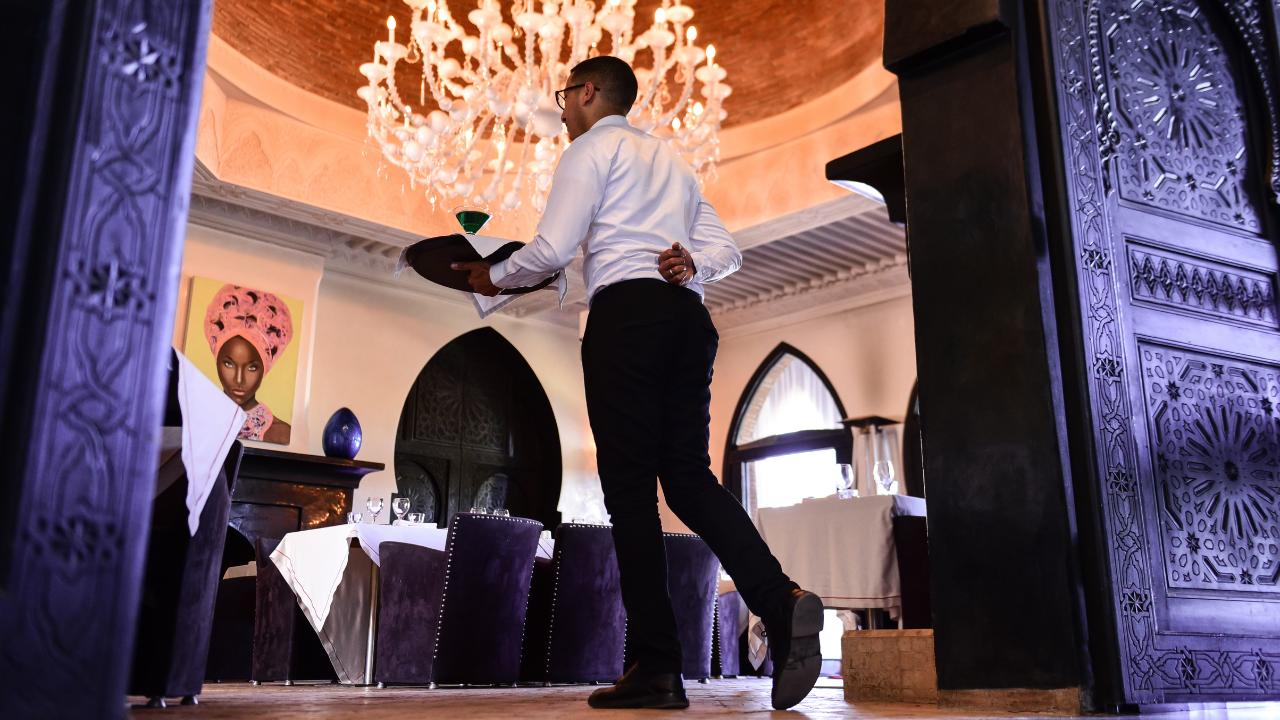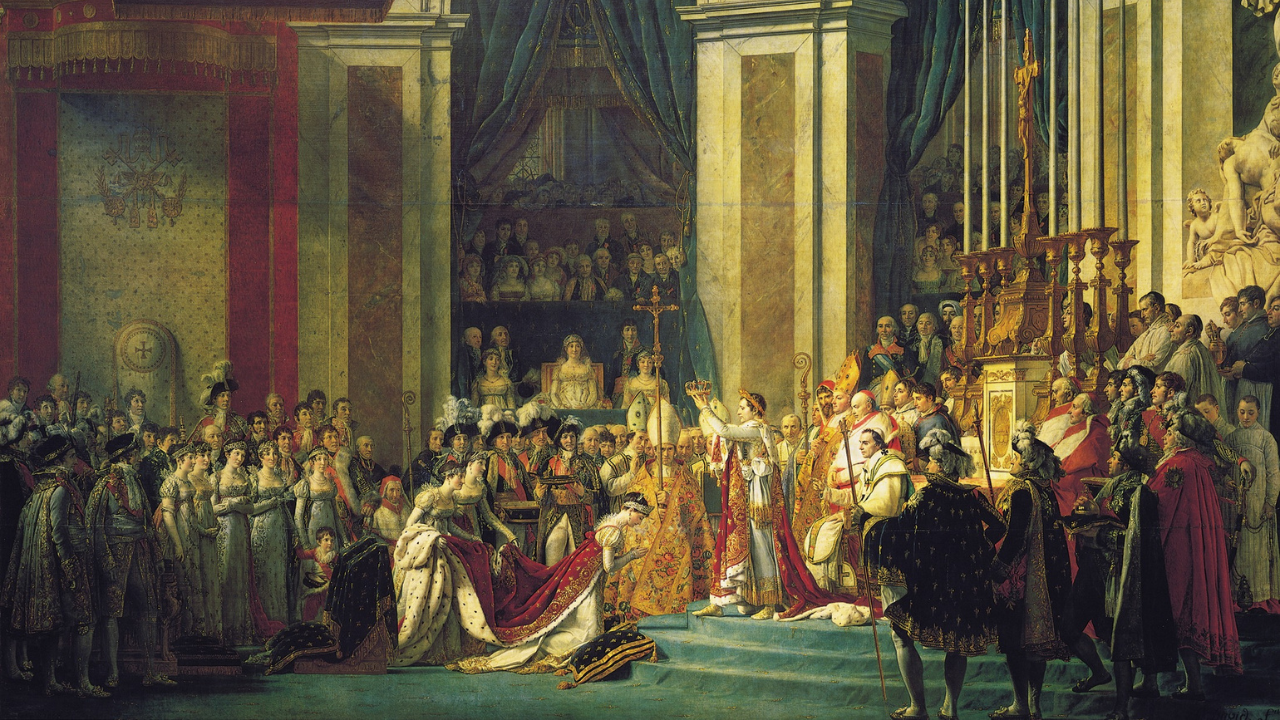Why do waiters keep one hand behind their back when pouring wine?
Have you ever noticed that waiters often keep one hand behind their back while serving wine (and not just wine)?
It’s an elegant gesture, commonly seen in fine dining restaurants, during formal events, or in settings where the art of service is taken seriously. You’ve probably seen it at least once — it’s one of the most iconic and recognizable poses in dining etiquette.
But …
why do waiters keep one hand behind their back when pouring wine?
Have you ever wondered why they do it? What’s the meaning behind keeping a hand behind the back during wine service? What does Wine Etiquette say about it? Is it a rule just for professionals or can it be used in more casual settings too?
Let’s be honest, we’ve all asked ourselves these questions. Today, our experts take us through the origins of this tradition and explain why, even today, those serving at the table still choose to keep one hand behind their back.
Give us just a few minutes of your time and you’ll discover something truly fascinating.
Hand Behind the Back During Wine Service: Origins and History
There are no definitive sources on the origin of this practice, but according to legend, the habit of keeping one hand behind the back during wine service originated at the court of Louis XIV between the 17th and 18th centuries.
And this doesn't surprise us at all. Now we’ll explain why.
Louis XIV was known for his obsession with ceremony. At the court, every gesture, every word and every daily habit was part of a carefully codified ritual. Protocol was not just a matter of etiquette, it was a tool of power, a means to assert the king’s supremacy. Nothing was left to chance. From meals to strolls in the gardens, from official meetings to banquets, every moment of the day followed strict rules. Everything was meant to express the grandeur and central role of the king.
Table service also followed this logic. Often, aristocrats weren’t even invited to take part in the meal, they could only watch in silence, as if they were spectators at a theatrical performance. Meanwhile, the servants moved with precise and codified gestures, respecting a code of conduct defined by utmost elegance and deference.
Among the many codified gestures during wine service, it is said that keeping the free hand behind the back was one of the most important: a symbol of discipline and respect towards the king.
It was precisely between the 18th and 19th centuries that the first etiquette and manners manuals began to spread, some of which were entirely dedicated to the art of table service. Many of the rules outlined in these texts directly referenced the customs of Louis XIV’s court, which had by then become a model of formality and refinement. Among the codified practices, the gesture of keeping one hand behind the back during service stood out as an expression of respect, control and discretion toward guests at the table.
This gesture lost its connotations of authority and dominance typical of the rituals at Louis XIV’s court. It transformed into a more discreet and professional sign, associated with courtesy and elegance in the way of serving.
Why Sommeliers Keep One Hand Behind Their Back When Pouring Wine
Today, many etiquette manuals recommend keeping one hand behind the back when pouring wine, especially in professional and formal settings, as sommeliers do. But nothing stops you from adopting this elegant gesture even during a dinner with friends or family, a small detail that adds style and refinement to the service.
Considering that, according to Wine Etiquette, wine is poured from the right with the right hand, the hand that should be kept free behind the back is the left one.
Now, let’s take a closer look at why this gesture is recommended.
Is it just a matter of elegance? Actually, no. Keeping one hand behind your back while pouring wine isn’t just a stylish move, it also serves a practical purpose.
There are several good reasons why it’s worth adopting. Here they are:
● elegance
Keeping one hand behind the back helps maintain a more orderly and composed posture, which conveys confidence and control, essential qualities for anyone aiming to provide high-level professional service.
● control of the gesture
Keeping the free hand behind the back also helps stabilize posture, making the wine-pouring motion smoother, more controlled, and more secure.
● focus on the service
Keeping one hand behind the back helps avoid unnecessary movements, keeping full attention on the act of pouring the wine. This allows for more precise and secure control of the gesture.
● respect and attention toward the guest
As mentioned, it’s the left hand that should be kept behind the back, while the wine is served to the guest’s right using the right hand — the one furthest from the guest. Keeping the left hand—the one closest to the guest — behind the back helps avoid accidental contact or bumps during service, preventing unpleasant situations.
In short, this posture is a symbol of refinement and elegance and it also proves to be highly practical: it allows for a smoother and more orderly wine service, while minimizing the risk of coming into contact with the guest.
If you liked our article and if you want to continue to receive news, updates and curiosities about the world of wine, subscribe to the Wineshop.it wine newsletter. Lots of content and offers await you!











